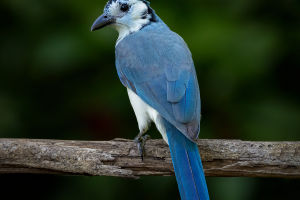Peacocks belong to the family Phasianidae in the order Galliformes. They are large terrestrial pheasants found in the East Indies of Southeast Asia.
Peacocks prefer to live in hilly forests, dry semi-desert grasslands, shrubs, and deciduous forest areas. They especially like to live near water.
The average lifespan of peacocks is about 12 years. However, if they are raised in captivity and provided with a comfortable environment and sufficient food, they may live up to 15-18 years.
The lifespan of different species of peacocks varies. Generally, green peacocks have a relatively shorter lifespan compared to blue peacocks. Blue peacocks, if cared for carefully, can live up to 20-25 years.
Peacocks do not have a fixed breeding season. The timing of their reproduction depends on the arrival of the local rainy season. The male builds a nest of dead leaves deep in the dense undergrowth and guards it while the female incubates the 3-4 beautiful creamy brown eggs.
The hatching period is about 26-28 days. After hatching, the young chicks are raised by their parents together and become sexually mature after 1-2 years.
Peacock varieties include blue peacock, green peacock, white peacock, black peacock, and hybrid peacock. Currently, there are only two kinds of peacocks recognized internationally: the blue peacock and the green peacock.
Hybrid peacocks are the result of a cross between the two. In addition, there are rare mutant varieties of white peacock and black peacock that are obtained by mutation of the blue peacock.
1. Blue Peacock
The blue peacock's crown feathers are wide fan-shaped. The female blue peacock has a gray back and white belly, while the male bird is very showy.
Blue peacocks mainly feed on small reptiles such as seeds, grass seeds, insects, wild fruits, and lizards. They have a long lifespan of more than 20 years.
2. White Peacock
The white peacock is not an internationally recognized species. It is generally a mutant of the wild blue peacock in artificial breeding. Blue peacocks mutate into white peacocks, and the mutation rate is about one in a thousand.
Therefore, the number of white peacocks is very small, and they are very precious. When the white peacock opens its tail, its whole body is white and flawless, making it a beautiful sight.
3. Green Peacock
The green peacock has emerald green feathers, and males can open their tails. When the green peacock spreads its tail, it is colorful and very beautiful. Green peacocks generally inhabit along rivers, move in low mountain forests and bushes, and like to move in open areas such as sparse forests and grasslands.
The number of eggs laid by the green peacock and the hatching rate is relatively weak compared to the blue peacock. They have higher requirements for the living environment, making it difficult for small peacocks to survive.
4. Black Peacock
The black peacock has a crown feather cluster on the top of its head, the whole body feathers are black, and the face is white. Black peacocks often inhabit open areas such as sparse grasslands and can grow normally at minus 30 degrees Celsius.
India has bred black peacocks that can reproduce. Black peacocks are omnivores, and their food is mainly termites. Because the frequency of blue peacocks mutating into black peacocks is extremely low, and the mutation may carry a lethal gene, the number of black peacocks is extremely rare.
However, peacocks are also hunted for their meat and feathers, and their natural habitats are being destroyed by deforestation and urbanization. As a result, many peacock species are now endangered or vulnerable. Conservation efforts are underway to protect these magnificent birds and their habitats.
Peacocks are a remarkable species of bird that have captivated humans for centuries with their stunning beauty and intriguing behavior. With proper care and conservation efforts, we can ensure that these magnificent creatures continue to thrive and enchant us for many years to come.


